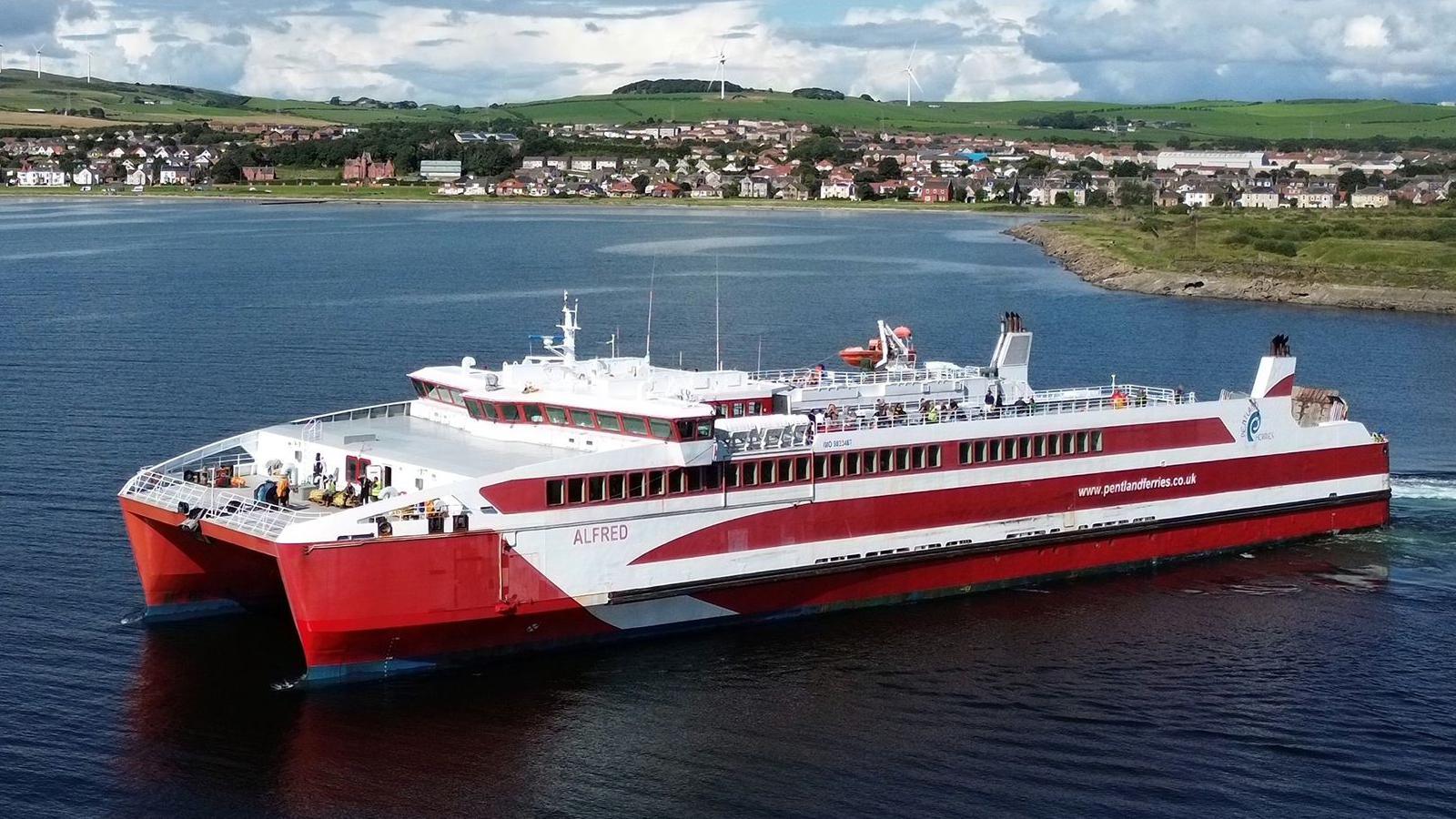News EventMonday, December 30, 2024 @ 0700 |
GLEN SANNOX (2024- Ro-ro ferry 102.4m 336 feet overall of Caledonian MacBrayne, Gourock, Scotland) |
 Own Page Own Page |
||||
'Green' ferry GLEN SANNOX emits more CO2 than old diesel ship CALEDONIAN ISLES ..... PART 3 of 3 |
||||||
|
||||||
How can Scotland's ferries become greener?It is possible to run Glen Sannox on biogas, which is produced from organic waste such as manure or by-products from the whisky industry. Since the carbon dioxide released when burning bio-methane originates in the atmosphere rather than underground, it is considered carbon neutral. However, building such a plant in Scotland would require major capital investment and would also involve facilities for supercooling the gas to turn it into a liquid. If a biogas facility were to be developed, one option would be to repurpose the Grangemouth oil refinery where hundreds of jobs are currently under threat. Four more large CalMac ferries under construction in Turkey will have conventional MGO engines with some limited battery power for manoeuvring in harbour. But they have a deeper draught (the amount of hull below the waterline) and lower cargo requirements - meaning a more fuel-efficient hull shape has been possible. CMAL says they have also been designed with the possibility of retrofitting them for potential future fuels such as ammonia. An alternative option would be to consider catamarans, which are far more fuel-efficient than single-hulled ships. The chartered catamaran Alfred, which can carry 98 cars and cost only £14.5m to build, has been operating successfully on the Arran route for the past 20 months. Christopher Brindle
Catamarans such as MV Alfred as generally more fuel-efficient than single-hulled ships Its owner describes it as the most environmentally-friendly large ferry in Scotland because of its low fuel consumption. CalMac believes advances in battery technology mean about 90% of its routes could potentially be serviced by all-electric ferries, rising to 100% if fast charging were available. Prof Smith says this is the most climate-friendly option at the present time - although it would require significant upgrades to electricity infrastructure. "Many other countries are putting battery electric vessels into routes similar to those serviced by these vessels," he said. "And that's a solution which if charged with renewable electricity would be zero emissions at the point of operation. "So it's a far more sustainable and viable investment in the long-run, and hopefully we will see more of those in the future." |
||||||
